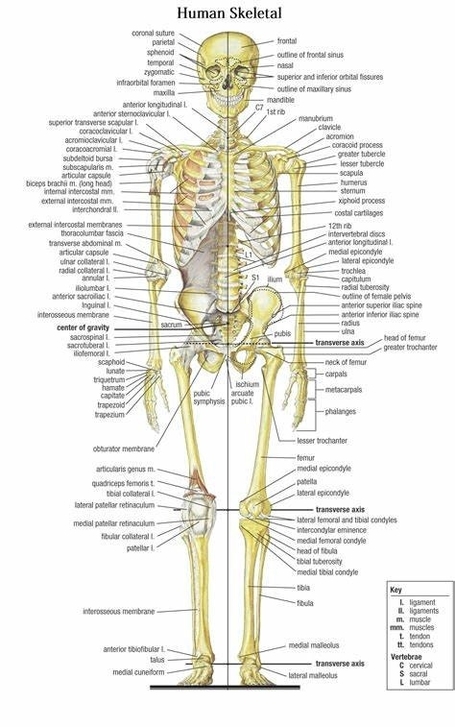Human Bones Anatomy

Human Bones Anatomy
The human skeleton, an internal framework, is composed of individual bones and cartilages. It’s intimately associated with fibrous connective tissues, the ligaments, and tendons. The skeleton can be divided into two main parts:
1. Axial Skeleton: Comprises the vertebral column, much of the skull, and the visceral part, which includes the lower jaw, some elements of the upper jaw, and the branchial arches, including the hyoid bone.
2. Appendicular Skeleton: Includes the pelvic (hip) and pectoral (shoulder) girdles and the bones and cartilages of the limbs.
The skeleton performs three primary functions: support, protection, and motion. The vertebral column, corresponding to the notochord in lower organisms, is the main support of the trunk. The central nervous system lies largely within the axial skeleton, the brain being well protected by the cranium and the spinal cord by the vertebral column.
Bones are living tissues that make up the body’s skeleton. There are three types of bone tissue:
1. Compact Tissue: The harder, outer tissue of bones.
2. Cancellous Tissue: The sponge-like tissue inside bones.
3. Subchondral Tissue: The smooth tissue at the ends of bones, covered with cartilage.
The tough, thin outer membrane covering the bones is called the periosteum. Beneath the periosteum’s hard outer shell are tunnels and canals through which blood and lymphatic vessels run to carry nourishment for the bone. Muscles, ligaments, and tendons may attach to the periosteum.
Bones are classified by their shapeas long, short, flat, and irregular. Primarily, they are referred to as long or short. The adult human skeleton consists of 206
